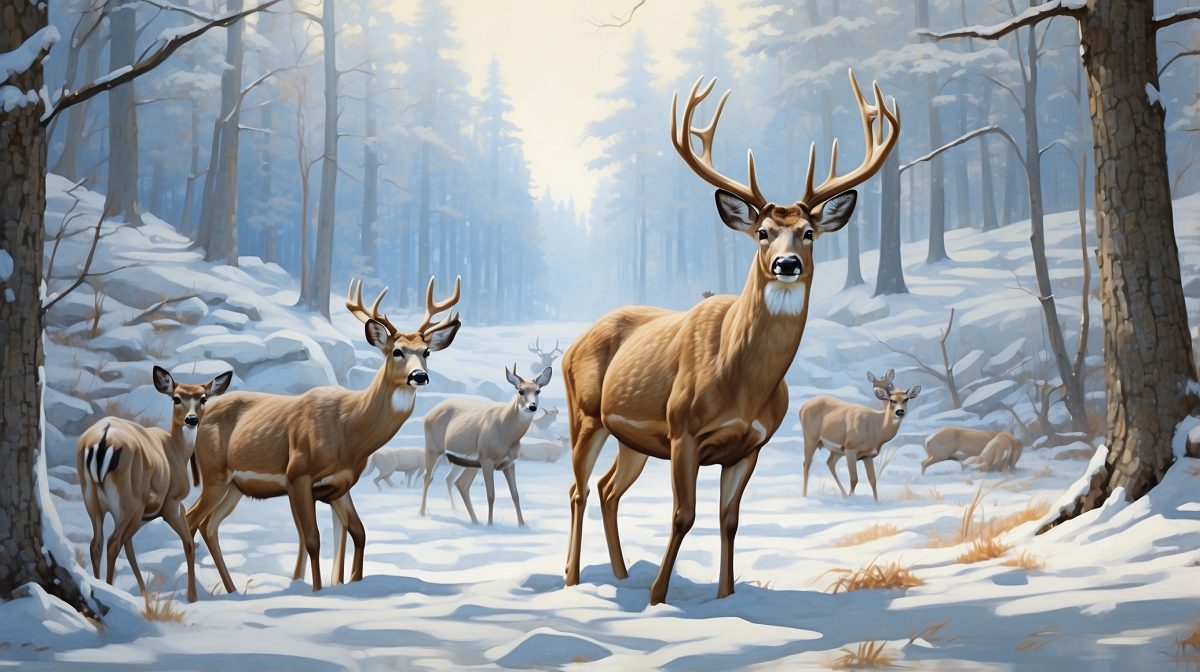Whitetail Feeding Habits
When it comes to grub, our Texas Hill Country whitetails ain’t too picky, but they do have their favorites. Throughout the year, their diet shifts with the seasons—acorns in the fall, green shoots in the spring, and whatever else they can forage. These deer are browsers by nature, munchin’ on a mix of leaves, twigs, and fruits that keep them goin’. But it ain’t just about what’s growin’ wild; places like the JL Bar Ranch Resort offer up food plots and supplemental feed that’s like a five-star buffet for these critters.
Now, y’all might be wonderin’ how the weather plays a part in all this. Well, just like us, deer tend to hunker down when the weather gets foul. Extreme heat or a cold snap can send ’em lookin’ for shelter rather than food. But when conditions are just right, you can bet your bottom dollar they’ll be out and about, feastin’ on nature’s bounty. That’s why keepin’ an eye on the sky can give you a leg up on predictin’ their movements.
Deer Movement Patterns
Deer are crepuscular, meanin’ they’re most active at dawn and dusk—times when the light is low and they can slip around unnoticed. This habit is somethin’ hunters and wildlife enthusiasts alike should take note of, ’cause it tells us the best times to be out there lookin’ for ’em. And it ain’t just the light that affects their comings and goings; the time of day plays a big role too. Midday, you’ll likely find ’em bedded down, conservin’ energy for their next foray.
Seasons change, and so do the wanderin’ ways of our whitetail friends. The rut, or breedin’ season, is when you’ll see bucks throwin’ caution to the wind as they chase after does. And when fawnin’ season rolls around, the does get extra secretive, hidin’ their young from potential threats. These seasonal dances are as old as the hills themselves and are crucial for anyone lookin’ to understand or witness whitetail deer in their natural state.
Behavioral Adaptations
Whitetail deer ain’t just survivors; they’re downright crafty when it comes to dealin’ with what Mother Nature throws at ’em. They’ve learned to live with us humans, adjustin’ their patterns to avoid the hustle and bustle. And when it comes to predators, they’ve got a whole bag of tricks to stay one step ahead, from their keen sense of smell to their fleet-footed escapes. It’s this adaptability that’s kept ’em thrivin’ in the Texas Hill Country for generations.
And let’s not forget about the social side of things. Deer have a pecking order that can affect everything from who eats first to who gets the best beddin’ spots. This hierarchy shifts with the seasons, too, especially when it’s time for the bucks to strut their stuff and stake their claims. Understandin’ these social dynamics is key to predictin’ deer behavior, whether you’re watchin’ from a distance or tryin’ to manage a population on your own land.
Practical Applications
For all y’all hunters out there, knowin’ the best times and places to find whitetail deer is like havin’ a secret map to treasure. Early mornin’ and late evenin’ are prime times, but there’s more to it than just the clock. You gotta consider everything from the lay of the land to the local food sources. And for the wildlife watchers, it’s all about observin’ without makin’ a ruckus. Keep a respectful distance, move slow, and use the natural cover so you can watch these beauties without spookin’ ’em.
If you’re lookin’ to manage your land for a healthy deer population, it’s all about balance. Provide ’em with the resources they need, like water, food, and cover, and they’ll thrive. But it’s not just about attractin’ deer; it’s about sustainin’ ’em. Responsible land management means keepin’ an eye on the numbers and makin’ sure there’s enough to go around for all the wildlife callin’ your property home.
Conclusion
Well, we’ve covered quite a bit of ground, from the feedin’ habits of our whitetail deer to their intricate movement patterns. Remember, understandin’ these creatures is about more than just fillin’ a tag or snappin’ a photo—it’s about respectin’ and appreciatin’ the natural wonders of the Texas Hill Country. So next time you’re out there among the live oaks and the bluebonnets, take a moment to reflect on the joy of witnessin’ these animals in their element.
And don’t y’all forget, whether you’re a hunter, a wildlife enthusiast, or just someone who loves the great outdoors, takin’ the time to understand whitetail deer behavior can make your time in nature that much richer. So here’s to the whitetails, and here’s to the Texas Hill Country—may they both continue to flourish for generations to come.
FAQs
What time of day are whitetail deer most active?
Whitetail deer are most active during the twilight hours—dawn and dusk—when the light is low and they can move about more discreetly.
How do weather conditions affect whitetail deer movement?
Extreme weather conditions, like heavy rain or high heat, can limit deer activity, causin’ them to seek shelter rather than food.
Can you predict deer movement during the rut?
During the rut, bucks are more active as they search for does, often throwin’ caution to the wind, which can make their movements more predictable.
How does the presence of humans alter whitetail deer behavior?
Whitetail deer can adapt to human presence, often alterin’ their movement patterns to avoid populated areas or activity during the day.
What are some ways to attract whitetail deer to your property for observation?
To attract deer, provide natural food sources, water, and safe cover. Food plots and supplemental feed can also encourage deer to visit your property.


